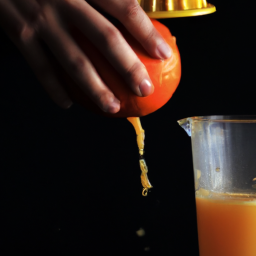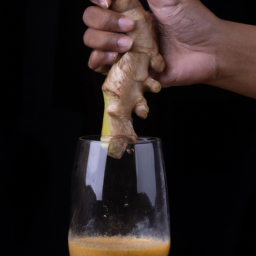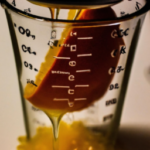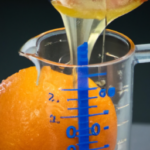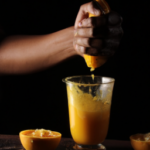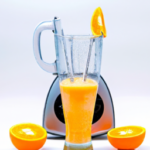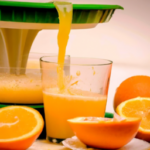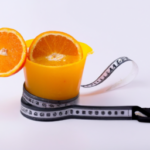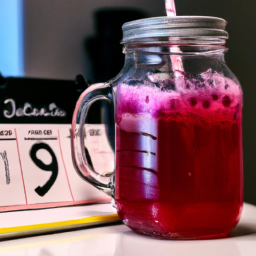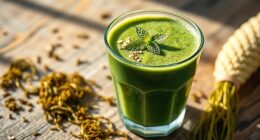Using a juicer to extract juice from an orange is an easy and satisfying way to enjoy the freshness and nutrient-packed goodness of orange juice. Whether you want to boost your immune system, quench your thirst, or get a jumpstart on your day with a burst of energy, juicing an orange offers a quick and convenient solution.
As someone who loves fresh juice, I’ve spent countless hours experimenting with different juicing techniques, and in this article, I’m going to share everything I’ve learned about how to juice an orange with a juicer.
First, it’s important to choose the right juicer. There are a lot of different juicers on the market, but not all of them are created equal. For juicing oranges, I recommend using a centrifugal juicer, which is designed to extract juice quickly and easily from citrus fruits.
Once you have your juicer, you’ll need to:
- Wash and cut your oranges
- Prepare the juicer
- Juice the oranges
- Collect the juice
- Store the juice
- Clean the juicer
I know this might sound like a lot of work, but trust me, it’s all worth it when you take your first sip of fresh, delicious orange juice.
Key Takeaways
- Choosing the right juicer is crucial for efficient and effective juicing of oranges
- Firm and heavy oranges should be selected for juicing to extract maximum juice
- Proper cleaning of the juicer after each use is essential for its maintenance
- Storing freshly squeezed orange juice in airtight containers and consuming it within 24-48 hours is recommended to retain its nutrition and taste.
Choose the Right Juicer
You’ll want to make sure you pick the juicer that fits your needs and budget before you start dreaming of freshly squeezed orange juice.
There are two main types of juicers: centrifugal and masticating. Centrifugal juicers are typically less expensive and work by grinding up the fruit and separating the juice from the pulp through a strainer. However, they can be quite loud and tend to produce more foam.
Masticating juicers, on the other hand, use a slower, more gentle process to extract juice from the fruit, resulting in less foam and a higher yield of juice. However, they are generally more expensive and take up more space.
When it comes to choosing the best oranges for juicing, you’ll want to look for ones that are firm and heavy for their size. Avoid oranges that are too soft or have any obvious bruises or blemishes. Valencia oranges are a popular choice for juicing, as they are juicy and sweet, but you can also use navel oranges or blood oranges.
Once you’ve got your juicer and your oranges, it’s time to move on to the next step: washing and cutting the oranges.
Wash and Cut the Oranges
First, take the oranges and give them a gentle bath under running water, making sure to remove any dirt or debris. Using organic oranges is highly recommended as they’re free from harmful pesticides and chemicals.
Once clean, place the oranges on a cutting board and slice each one in half with a sharp knife. There are different ways to cut oranges for juicing. Some people prefer to slice off the top and bottom of the orange and then score the skin in quarters, while others simply slice the orange in half. Whatever method you choose, make sure to be careful not to squish the juicy insides.
After the oranges are washed and cut, it’s time to prepare the juicer. Simply place the halved oranges in the juicer’s feed chute, with the cut side facing down. Before turning on the juicer, make sure to check the manufacturer’s instructions for any specific settings or recommendations.
With the oranges securely in place, turn on the juicer and watch as it extracts the delicious, fresh juice.
Prepare the Juicer
Now it’s time to get your equipment ready by setting up the machine according to the manufacturer’s instructions before proceeding to the next step. Pre-juicing preparation is crucial in ensuring that your juicing experience is smooth and efficient.
Make sure to have all necessary equipment on hand, including the juicer, a glass or pitcher to catch the juice, and a knife to cut the oranges.
To prepare the juicer, begin by thoroughly washing all of the components, including the hopper, strainer, and pusher. Next, assemble the machine according to the manufacturer’s instructions, making sure that all parts are securely attached and in the correct position.
Finally, plug in the machine and turn it on to ensure that it is functioning properly before adding the oranges.
With the juicer properly prepared, you’re ready to move on to the next step and juice the oranges.
Juice the Oranges
Okay, so now that the juicer’s ready, it’s time to juice the oranges.
First, I place the halves on the juicer, making sure they fit snugly.
Then, I press down firmly on the juicer lever, using my arm strength to extract as much juice as possible.
Finally, I rotate the fruit to ensure all the juice is squeezed out.
With these three steps, I can easily and efficiently juice all the oranges I need.
Place the Halves on the Juicer
Simply place the two halves of the orange onto the juicer, and watch as the machine does all the work, effortlessly extracting every last drop of juice. Juicing an orange with a juicer is a breeze, and with a few citrus juicing tips and techniques, you can get the most out of your fruit.
Here are three tips to keep in mind:
-
Cut the orange in half: Before placing the orange halves on the juicer, make sure to cut the orange in half. This will ensure that the juicer can extract all the juice from the fruit.
-
Place the cut side down: When placing the orange halves on the juicer, make sure to place the cut side down. This will make it easier for the juicer to extract the juice.
-
Press down firmly: To get the most juice out of your oranges, press down firmly on the juicer while it’s extracting the juice. This will help to extract every last drop of juice from the fruit.
With these citrus juicing tips in mind, juicing an orange with a juicer is a simple and effective process.
Now that the orange halves are in place on the juicer, it’s time to move on to the next step: pressing down firmly to extract all the juice.
Press Down Firmly
To get the most out of your citrus fruit, firmly press down on the halved fruit while it’s being extracted. This step is crucial in making sure that you extract as much juice as possible from your fruit. Applying even pressure across the fruit ensures that you get the most juice out of it. However, be careful not to over juice as this may cause the juice to have a bitter taste.
To help you apply even pressure, use the juicer’s lever arm to press down on the fruit. Start by positioning the halved fruit on the juicer, with the cut side facing down. Then, use the lever arm to press down on the fruit firmly. You can adjust the amount of pressure you apply depending on the juicer you’re using and the ripeness of the fruit. Remember to avoid over juicing as this may cause the juice to have a bitter taste. Once you’re done, move on to the next step of rotating the fruit to extract all the juice from it.
Rotate the Fruit
Now, you can rotate the fruit to extract even more juice from it. Place your hand on top of the fruit and give it a gentle twist to release any remaining juice. Rotating the fruit is a simple but effective technique that can help you get the most out of your juicing experience.
Here are some benefits of hand juicing and alternative citrus fruits to juice that you may want to consider:
-
Benefits of hand juicing:
-
Hand juicing gives you more control over the amount of pressure you apply to the fruit, which can help you extract more juice without damaging the machine or the fruit.
-
Hand juicing is a great way to get some exercise and build hand strength, especially if you do it on a regular basis.
-
Hand juicing can be a fun and rewarding activity that you can share with your family and friends.
-
Alternative citrus fruits to juice:
-
Lemons and limes are great for adding a tangy, acidic flavor to your juice, and they’re also rich in vitamin C, antioxidants, and other nutrients.
-
Oranges and grapefruits are sweet and refreshing, and they’re packed with vitamin C, folate, potassium, and other beneficial compounds.
-
Tangerines and mandarins are smaller and sweeter than oranges, and they’re a good source of vitamin C, fiber, and other essential nutrients.
Now that you’ve rotated the fruit and extracted all the juice, it’s time to move on to the next step: collecting the juice.
Collect the Juice
Now that I’ve juiced the oranges, it’s time to collect the juice.
I like to use a clear container so that I can watch the juice fill up.
It’s important to remove and empty the container as needed to prevent overflow and spills.
Watch the Container Fill Up
As the juicer spins the orange, I can’t help but observe the juicing process with fascination. The machine is designed to apply just the right amount of pressure to the fruit, extracting every last drop of juice. It’s amazing to see how efficient the juicer is at breaking down the orange into a smooth liquid.
I watch as the orange peel and pulp are separated from the juice, leaving behind only the sweet, tangy liquid in the container. The importance of the container size cannot be overstated. If the container is too small, you’ll have to stop the juicing process frequently to empty it out. This can be time-consuming and frustrating, especially if you’re juicing a large batch of oranges.
On the other hand, if the container is too large, the juice might spill over the sides, making a mess. It’s essential to choose the right size container for your needs, so you can enjoy the juicing process without any interruptions. Speaking of interruptions, the next step is to remove and empty the container as needed.
Remove and Empty as Needed
After filling up the container, it’s time to keep an eye on it and not let it overflow like a watched pot that never boils.
As the juicer continues to extract the juice from the oranges, the container will fill up quickly. It’s important to remove the container and empty it as needed to reduce waste and prevent any mess from occurring.
Once the container is emptied, don’t just throw away the leftover orange peels. Instead, consider reusing them in creative orange juice recipes or as a natural cleaning agent.
With the container empty and the leftover peels set aside, the process of juicing the oranges can continue.
Repeat the Process
To make sure you get all the juice out of the orange, keep repeating the process until it’s completely juiced. Don’t settle for just a few drops of juice. Repeat techniques such as rotating the orange and applying pressure to the juicer. Avoid mistakes like removing the orange too soon or not applying enough pressure.
With each repetition, you’ll notice that the juice output decreases, which means that you’re almost done. Once you’re satisfied that you’ve extracted all the juice from the orange, it’s time to store it.
Don’t let all that hard work go to waste by leaving the juice out in the open. Instead, transfer it into a container with a tight-fitting lid and place it in the refrigerator. This will help preserve the freshness and flavor of the juice for later use.
Store the Juice
Once all the juice has been extracted, it’s time to seal it in a container and refrigerate to preserve its freshness and flavor. When it comes to storing techniques, it’s important to note that the longer the juice sits, the more it will oxidize and lose its nutritional value. Therefore, it’s best to store the juice in an airtight container and consume it within 24-48 hours.
To ensure that the juice stays fresh and doesn’t develop any off flavors, it’s important to choose the best containers. Glass jars with airtight lids, mason jars, and BPA-free plastic bottles are all great options for storing fresh juice. It’s important to avoid using containers made of materials like metal or aluminum, as they can react with the acid in the juice and alter its taste. By following these tips, you can enjoy your freshly squeezed orange juice for longer and get the most out of its nutritional benefits.
After storing the juice, it’s important to clean the juicer properly to prevent any buildup and maintain its longevity.
Clean the Juicer
Keeping your juicer clean is essential for both extending its lifespan and ensuring that it functions properly every time you want to make fresh, delicious juice. Effective cleaning of your juicer involves more than just a quick rinse under running water. Here are some maintenance tips to ensure your juicer stays in top shape:
- Disassemble the juicer completely after each use.
- Soak all removable parts in warm, soapy water for a few minutes to loosen any stuck-on pulp or debris.
- Use a soft brush or sponge to scrub the parts thoroughly, paying special attention to any hard-to-reach areas.
Once you’ve thoroughly cleaned and dried all the parts of your juicer, you’re ready to enjoy the fresh orange juice you just made.
Enjoy the Fresh Orange Juice
Now that your juicer is clean and ready, sit back and savor the taste of freshly squeezed, tangy citrus nectar. There’s nothing quite like the taste of freshly squeezed orange juice, and with a juicer, you can enjoy it any time you want. Not only is it delicious, but it’s also packed full of health benefits. Oranges are high in vitamin C, antioxidants, and fiber, making it a great addition to any diet.
To make the most out of your fresh orange juice, try experimenting with different recipe ideas. Add a splash of sparkling water for a refreshing twist, or mix it with other fruits for a tasty smoothie. The possibilities are endless, and with a juicer, you can create your own unique blends. So go ahead and indulge in some fresh orange juice, your taste buds and body will thank you for it.
As you become more comfortable with juicing, there are some tips and tricks you can use to make the process even easier.
Tips and Tricks
To make the most out of your juicing experience, it’s helpful to invest in a variety of fruits and vegetables to create unique blends and flavors. I personally love experimenting with different ingredients to find the perfect combination.
Here are some juicing hacks that I’ve found to be especially helpful when it comes to juicing oranges:
- Roll the orange on a hard surface before juicing to help break down the pulp and get the most juice out of it.
- Cut the orange into smaller pieces to make it easier to feed into the juicer.
- Avoid juicing the white part of the orange, as it can add a bitter taste to the juice.
- Don’t forget about the nutrition in the orange peel! Try adding a small amount of orange zest to your juice for an extra kick of flavor and nutrients.
Overall, juicing oranges is a great way to add some extra nutrition to your diet. Oranges are packed with vitamin C, potassium, and other beneficial nutrients. By following these juicing hacks, you can maximize the amount of juice you get from each orange and create delicious, healthy drinks.
Frequently Asked Questions
Can I use a blender instead of a juicer to make orange juice?
Yes, you can use a blender to make orange juice, but the consistency will be different from that of a juicer. A blender will produce a thicker and pulpier juice, while a juicer will give you a smoother and more liquid consistency.
How long can I store freshly squeezed orange juice in the refrigerator?
Did you know that freshly squeezed orange juice can be stored in the refrigerator for up to 3 days? To preserve the juice, store it in an airtight container. Drinking fresh orange juice provides essential nutrients and boosts your immune system.
Is it necessary to remove the seeds from the oranges before juicing?
It’s not necessary to remove seeds from oranges before juicing, but seedless oranges for juicing are available. Juicing with seeds adds extra nutrients, but may create a bitter taste.
Can I add sugar or other sweeteners to my freshly squeezed orange juice?
Yes, I can add sweeteners to my freshly squeezed orange juice. Honey is a healthy choice as it has antioxidants and boosts immunity. Alternatives to sugar for sweetening fresh orange juice include stevia, agave, and maple syrup.
How many oranges does it take to make a glass of orange juice using a juicer?
It takes around 3-4 medium-sized oranges to make a glass of orange juice using juicing techniques. Not only is it a refreshing drink, but also provides nutritional benefits such as vitamin C and potassium.
Conclusion
In conclusion, juicing oranges with a juicer is a simple and enjoyable process that can provide you with an abundance of fresh and healthy orange juice. By following the steps outlined in this article, you can ensure that your orange juice is both delicious and nutritious.
Remember to choose the right juicer for your needs, wash and cut the oranges, and prepare the juicer before juicing. Make sure to collect and store your juice properly, clean your juicer, and enjoy the fruits of your labor.
As the saying goes, "an apple a day keeps the doctor away,"and the same can be said for fresh orange juice. So, grab your juicer and start juicing those oranges for a healthier and happier you!
Ilana has been a vegan for over 10 years. She originally made the switch for health reasons, but soon found herself becoming more and more passionate about the ethical and environmental implications of a vegan lifestyle. Ilana is the author of The Graceful Kitchen, a blog all about veganism. She loves to cook up delicious and nutritious vegan meals, and share her recipes with others who are interested in leading a cruelty-free life. Ilana is also a strong advocate for using whole foods as the foundation of a healthy diet, and believes that going vegan is one of the best ways to achieve this.
